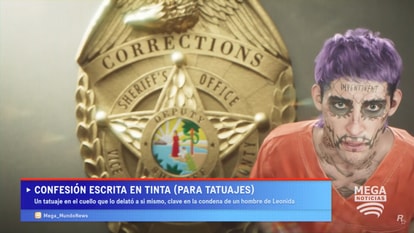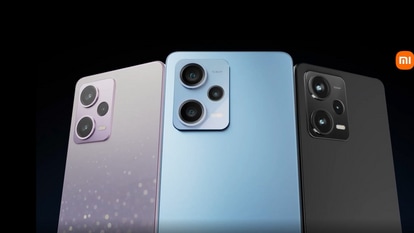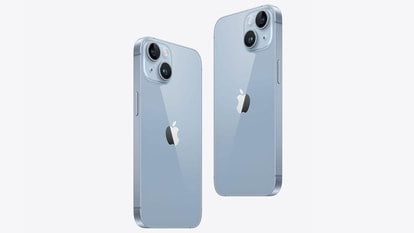Blind faith: Elon Musk, other visionaries have been promoting driverless car - it never arrives
Visionaries like Elon Musk have been promoting the idea of a driverless car for almost a hundred years. And yet, it never arrives — for obvious reasons.

Elon Musk, who had claimed that driverless cars would arrive this year, just got pulled over by federal regulators. Officials from the National Highway Traffic Safety Administration concluded that safety features in Tesla Inc.'s Autopilot system didn't work as designed and nudged the automaker to recall all its vehicles to address the issue.
It's debatable whether Tesla and Chief Executive Officer Musk can fix the problem, which has more to do with human drivers putting too much faith in the technology. You can't blame them, really. Visionaries like Musk have been promoting the idea of a driverless car for almost a hundred years. And yet, it never arrives.
There's some dispute as to when the idea of the driverless car first originated. The first experiments began when inventors realized they could use radio signals to control vehicles from a distance. After several attempts in the early 20th century, a radio engineer named Francis Houdina attracted considerable attention for his remote-controlled cars.
We are now on WhatsApp. Click to join.
In a typical demonstration of what he dubbed his “phantom control,” Houdina guided a car as it threaded its way down New York's Fifth Avenue. Pedestrians gaped at the sight of a driverless car. As the New York Times reported, the vehicle “zigzagged through the heavy traffic of the avenue,” moving “as if a phantom hand were at the wheel.”
But it was not a steady hand. The car barely missed a horse-drawn milk wagon, several trucks and automobiles, and a fire truck – and that was before it collided with a car containing journalists filming the exhibition. Houdina finally jumped behind the wheel after the car almost went through the windows of a candy store.
Houdina's “phantom” car was driverless in name only: the remote driver was never far behind. But the idea caught the imagination of the public, as well as futurists eager to tame the chaos unleashed by the automobile. Industrial designer Norman Bel Geddes took things to the next level when he designed the “Futurama” exhibit built by General Motors for the 1939 World's Fair.
Geddes envisioned a highway system 20 years into the future, where automatic radio control removed drivers from the equation, and kept cars zipping along at a uniform speed, with consistent space between vehicles. In the aptly titled Magic Motorways, published in 1940, Geddes offered a detailed vision of the future, where drivers would become obsolete.
Geddes framed the quest for automation in terms of safety. “As long as there is an opportunity to make a mistake,” Geddes wrote, “some driver will make it.” Geddes argued for removing drivers entirely, using a complicated system of radio signals and electromagnetic tracks that would choreograph the movement of automobiles across an integrated network of multilane highways.
Americans got their highways with the creation of the interstate system but driverless cars proved more elusive. This wasn't for a lack of trying by car companies and transportation engineers. Their ideas included some kind of wire or “guide” that would be laid down in the highway itself so that the car could follow it. In 1960, Newsday breathlessly predicted the “upcoming revolution of the roads.” Within 10 years, the paper confidently told readers: “Radar-controlled driving and electronic highways, well past the dream stages, will offer the motorist safety and speed.”
As the federal government began funding experiments, a few lonely voices raised doubts. In 1965, Carlton Robinson, the director of traffic engineering for the Automotive Safety Foundation, derided these futuristic visions. In a statement that still rings true today, Robinson declared: “taking control of the vehicle away from the driver … not only is extremely dangerous but also robs the vehicle of the very mobility that makes the automobile popular.”
By the late 1960s, enthusiasm for automatic highways waned. But the dream of a driverless car was reborn anew, with the computer chip at its heart. The idea, by then 50 years old, envisioned autonomous cars that could navigate the environment on their own, rather than follow wires buried beneath the pavement.
From the 1970s onward, car companies and governments sank considerable money into prototypes of self-driving cars with some success. Mercedes-Benz built a self-driving van that used computers, sensors and other contrivances to navigate the world.
More breathless predictions of a driverless future followed. By 1986, the Chicago Tribune predicted a future where “the urban commuter may leave driving to a computer.” A decade later, the Washington Post described a hypothetical business executive getting in the car in the morning, where he “could read the paper, make a cellular phone call, eat – anything except touch the wheel, brake, or accelerator – while the car does all the driving.”
And yet the driverless car failed to materialize. The problem was that the technology could easily go awry. In recent decades, this has led to ever-more sophisticated systems connected to the “internet of things” for information and updates.
That's great, but as a growing number of skeptics have warned, this makes self-driving cars vulnerable to hackers, who could conceivably mess with the software. A recent study found it wouldn't take much for a few calculated interventions to create gridlock on a mass scale, to say nothing of accidents.
The more immediate problem is one that the Tesla recall exemplifies: the introduction of cars that lull drivers into complacency by automating some, but not all, of the work of driving the car. This half-baked approach gives us the worst of both worlds, undermining driver skill while never fully automating the task of driving.
None of this has stopped Musk from telling everyone that we are on the verge of using genuinely driverless cars. Just this past summer he predicted Tesla would have a driverless car ready by the end of this year. Instead, Musk will now spend the holidays fixing problems created by a blind faith in the longstanding dream of a driverless future.
Catch all the Latest Tech News, Mobile News, Laptop News, Gaming news, Wearables News , How To News, also keep up with us on Whatsapp channel,Twitter, Facebook, Google News, and Instagram. For our latest videos, subscribe to our YouTube channel.






































